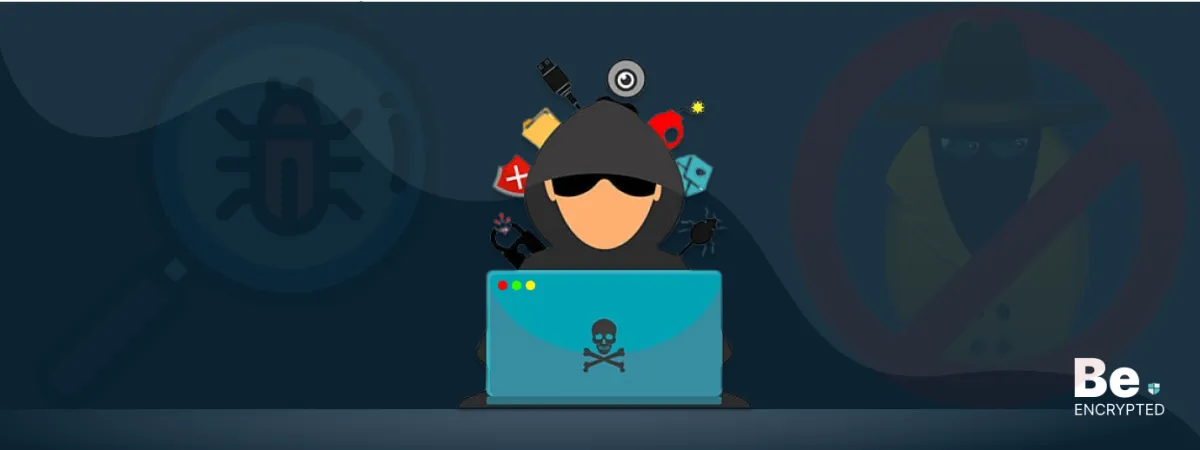Cyber threats are on the upsurge. The latest WannaCry, Ransomware, justifies the assertion, which affected numerous Windows PC users. Even Macs are not exempted from any cyber-attacks. There are many instances in which Mac users suffered an attack in the form of malware that amplified the cybersecurity threat.
This blog takes you through the different elements of cyber threats and possible ways of impacting systems across the globe. There is an earnest attempt to indicate Mac malware chronologically in Mac history of malware, aware users about the recent ‘Root Login’ bug that recently kept cybersecurity at stake, enlist antivirus software that was developed for the Mac platform to overcome the cyber threat, and portray the various cases of data loss and Mac data recovery solution.
Mac History of Malware
The first-ever virus for Mac was Leap-A, discovered in 2006. Subsequently, Sophos discovered the OpenOffice macro worm in 2007. Then comes MacSweeper, scareware exposed in 2008. In 2010, Mac saw the emergence of Pinhead, the backdoor Trojan. 2011 saw BlackHole RAT, the Trojan that allowed remote access to your Mac computer by hackers. The dispersal and discovery of Mac viruses are rising, and even Mac users, like susceptible PC users, are unsafe. The following section describes the latest cyber threat that was discovered on Mac.
Latest in cyber threats: Root login bugs
Lately, a bug in macOS High Sierraallowedbypassing of root login password authentication. Attackers exploiting this vulnerability could enter the victim’s Mac with root access and perform malicious activities. Attackers need to click other on the login screen and type root in the first textbox and nothing on the second. Then, after clicking unlock twice, Mac opens with root access. The access is somewhat similar to SQL injection in which login is granted by making the SQL query accurate using 1=1.
Antivirus for Macs
An antivirus program protects your Mac from the latest cyber threats. Top antivirus software available for Mac users include:
Sophos Home: The award-winning antivirus for your home Mac. The antivirus protects from ransomware, malware, viruses, and harmful websites.
Norton Security: The best security service provider for your Mac. The software defends against spyware, ransomware, viruses, malware, and online cyber threats.
Bitdefender Antivirus for Mac: The absolute protection software for Mac. The software safeguard against ransomware, adware, and Mac malware.
Data loss and Mac data recovery
Looking at the gravity of cyber security the contemporary world is confronting, developers of macOS have introduced the in-built Security and Privacy option in Mac. Users can ‘Download apps only from the App Store,’ ‘from identified websites,’ or ‘anywhere. The users are also equipped with a data encryption tool in FileVault.
Sometimes, all the inbuilt cyber security mechanisms are not used deliberately or due to ignorance of its importance, thereby suffering from virus attacks, identity theft, and data loss. The malicious activity on Mac can delete or steal your data from the hard drive. It is advised to all Mac users to back up their valuable data with Time Machine or leverage a data recovery tool to recover data from data loss, encryption, and deletion.
One data recovery tool most valued in the Mac community is Stellar Phoenix Mac Data Recovery – Professional. The software can recover any data loss due to accidental file deletion, data theft, logical failure of the storage device, and other instances.
Recover files After Mac gets infected by a Malware
Is your Mac infected with malware that makes the hard disk drive inaccessible? If yes, this blog provides tried and tested methodology that makes the drive accessible and recovers its data. Read on to know more.
Rampant Scenario these days!
While surfing various sites through your Safari, you come across free software. You downloaded the software but are ignorant about the embedded malware. Its GUI wizard has prompted you to install a packaged software/tool on installing the software. Unmindful that the tool is malware, you, on the flow of clicking next, inadvertently clicked next on the page where the unnecessary software was opted by default. Now, your Mac is infected with malware and the necessary software. Today, while opening a few files, you accidentally executed the malware. Consequently, your Mac hard disk drive is inaccessible.
This is just the tip of the iceberg. Your accidental and hurried action can even cost you infection with the most dangerous malware currently prevalent. Yes, you guessed it right: Ransomware. The malware infects your Mac in two ways.
- In the first way, it encrypts the files & folders on your hard drive, thereby making it inaccessible because opening the files and folders now requires a password you do not know.
- It locks the entire Mac with a message. In both cases, ransom is demanded for decryption files and folders or unlocking your Mac.
This malicious software can even be injected into your Mac from a Ransomware affected Windows PC. It might get into the Mac hardware through BootCamp Partition. Therefore, ensure you won’t download pirated software, freeware, or tools. Also, install the latest updated antivirus program to safeguard against network or connected device infection.
There is no ransomware in your Mac, as you predicted by going through its symptoms, but a different kind of malware has made your Mac’s internal hard drive inaccessible. Before you know how to safeguard your Mac and recover files that got affected by the malware, you must first understand what you can do to prevent yourself from data loss during a disaster (including ransomware). The best prevention against any data recovery hindrance is creating a backup. If you have your backup done through a Time Machine backup drive, you can use macOS install DVD or bootable flash drive to format and reinstall the operating system, then restore the backed-up data from the Time Machine. This solution is also valid if your Mac is infected with malware (even Ransomware).
Nonetheless, in your case: your Mac is infected with unknown malware, you have no data backup, and you want to recover your data. Is there any solution? Yes, there is, and that’s why you are here. You need to have a secondary computer to recover files from malware-affected Mac. Connect the primary computer where the hard drive is inaccessible to the secondary one, which will act as a means to install the data recovery software. The most trusted software for Mac is Stellar Phoenix Mac Data Recovery. Install the software on your secondary computer. Access the primary computer’s hard drive through the interface of Stellar Phoenix. Perform the necessary task as desired by the software’s wizard. Save the recovered data on the secondary computer (another external hard drive with insufficient storage space), which can be later transferred to the primary computer. Now, you can format the inaccessible drive using Recovery Partition and restore the data from the secondary computer’s hard drive. There you go. You have recovered your files.
Conclusion
The panacea for all kinds of data recovery needs is data backup. Ensure you back up the data regularly using Mac’s Time Machine software to an external backup storage medium. Suppose you lose your data after the last backup or your hard drive’s data is inaccessible due to malware. In that case, you can utilize Stellar Phoenix Mac Data Recovery– the finest data recovery software for Macintosh HD – to recover your data. The software can handle any logical failure to your Mac hard disk drive. If the hard disk drive of your Mac suffers from physical damage, you have to send the drive to a professional hardware recovery service provider to recover its data.
Share this article
About the Author
Rebecca James is an IT consultant with forward thinking approach toward developing IT infrastructures of SMEs. She writes to engage with individuals and raise awareness of digital security, privacy, and better IT infrastructure.
More from Rebecca JamesRelated Posts

How to Avoid Gambling Restrictions in 2024
KEY TAKEAWAYS Gambling is prohibited in multiple countries as it is addictive, and many people go ba...

20 Best Penetration Testing Tools For Security Professionals
KEY TAKEAWAYS If you’re in a hurry, then have a look at the list of 20 best penetration testin...

The Role of Developer Security in Software Development
KEY TAKEAWAYS The revolution of DevOps has reduced the SLDC and resulted in the creation of many sof...

How To Detect Hidden Cameras And Listening Devices? A Complete Guide
Many people feel like someone is watching them or listening to their conversations. They may be righ...

What is Virtual Firewall and How it Helps Us in 2024?
Scientists and technicians are trying to invent the latest technology protection to create barriers ...

7 Ways to Fight Against Ransomware Attacks
KEY TAKEAWAYS Ransomware attacks are growing frequently and affecting every sector of the business i...





